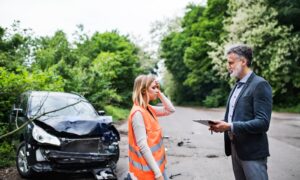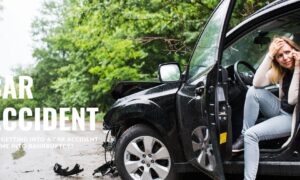Auto accidents are unfortunate events that can have significant consequences, including injuries, property damage, and even loss of life. When such accidents occur, it becomes crucial to determine the sequence of events leading to the collision accurately.
This is where auto accident reconstruction comes into play. Auto accident reconstruction is a scientific process that utilizes various techniques and principles to analyze evidence and recreate the events that led to an accident. In this article, we delve into the science behind auto accident reconstruction, exploring the methods, tools, and factors involved in this complex field.
The Importance of Auto Accident Reconstruction
Accurate accident reconstruction serves multiple purposes, including:
Determining Liability
One of the primary reasons for accident reconstruction is to establish liability. By analyzing the physical evidence, witness statements, and other relevant data, experts can reconstruct the accident and determine which party or parties were at fault.
Understanding the Accident
Accident reconstruction helps investigators gain a comprehensive understanding of how an accident occurred. By analyzing factors such as vehicle speed, road conditions, driver behavior, and vehicle dynamics, experts can piece together the sequence of events leading to the collision. A John Foy car accident lawyer can help injured victims understand legal options after a collision.
Improving Safety Measures
Findings from accident reconstructions contribute to the development of safety measures and regulations. By identifying the causes and contributing factors of accidents, engineers and policymakers can work towards implementing changes that reduce the likelihood of similar accidents in the future.
Methods and Tools Used in Auto Accident Reconstruction
Auto accident reconstruction relies on a combination of methods and tools to analyze evidence and recreate the accident. Some of the commonly employed techniques include:
Photogrammetry
Photogrammetry involves analyzing photographs or video footage taken at the accident scene. By using specialized software, investigators can extract precise measurements and create 3D models of the scene. This aids in determining the position and speed of the vehicles involved and can be used to recreate the collision.
Skid Mark Analysis
Skid marks left by vehicles provide valuable information about the speed, direction, and braking of the vehicles involved. Experts analyze the skid marks to calculate the speed of the vehicles before the collision and determine whether braking occurred.
Vehicle Dynamics Analysis
Vehicle dynamics analysis involves studying the movement and behavior of vehicles before, during, and after an accident. Factors such as acceleration, deceleration, yaw marks, and crush damage patterns are examined to understand the forces at play during the collision.
Computer Simulation
Computer simulation is a powerful tool in accident reconstruction. By inputting data such as vehicle specifications, road conditions, and driver inputs into specialized software, experts can create virtual reconstructions of accidents. These simulations help validate hypotheses, test different scenarios, and provide visual representations of the accident sequence.
Factors Considered in Auto Accident Reconstruction
Accident reconstruction experts take numerous factors into account when analyzing a collision. Some of the critical factors include:
Vehicle Speed
Determining the speed of the vehicles involved is crucial in accident reconstruction. Skid marks, crush damage, and other physical evidence are examined to estimate vehicle speeds. Additionally, data from event data recorders (EDRs) installed in modern vehicles can provide valuable insights into pre-crash speeds.
Road Conditions
The condition of the road, including factors such as weather, surface condition, and signage, can significantly impact accident reconstruction. Wet or icy roads, potholes, or insufficient signage can contribute to accidents and influence vehicle behavior.
Human Factors
Driver behavior, including speed, reaction time, impairment, and distractions, plays a vital role in accident reconstruction. Witness statements, driver histories, and forensic analysis help experts understand the human element involved in the collision.
Vehicle Equipment
The condition of the vehicles involved, including brake functionality, tire conditions, and mechanical failures, is examined to determine their impact on the accident.
Auto accident reconstruction is a complex scientific process that involves analyzing evidence, employing various methods and tools, and considering multiple factors. By accurately recreating accidents, accident reconstruction experts provide valuable insights into liability, accident causation, and safety improvements. Through their work, they contribute to the pursuit of justice, the prevention of future accidents, and the overall enhancement of road safety.



































